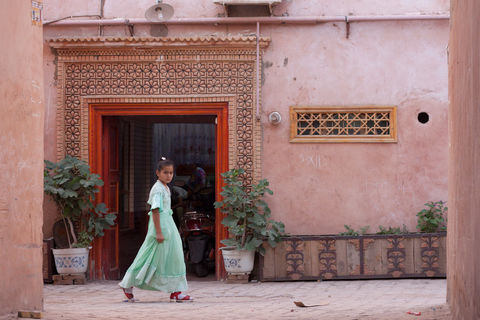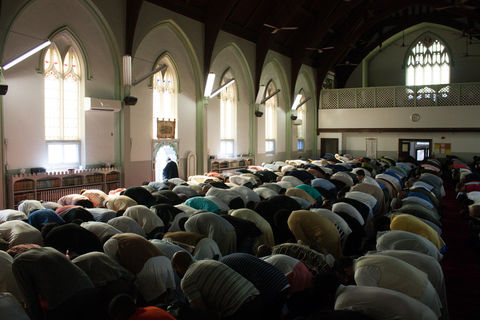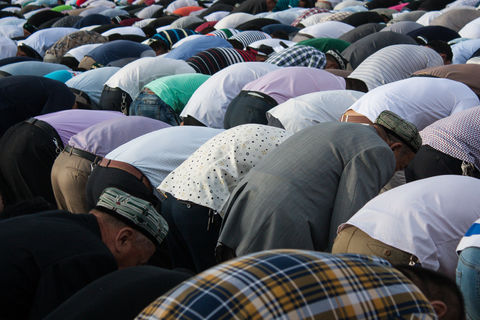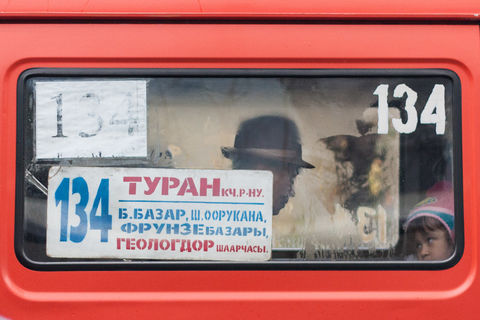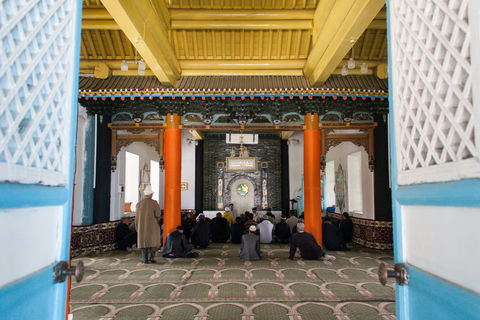Weddings on the Roof of the World
Tashkurgan is an oasis in the Pamirs, the roof of the world. It lies in the very western corner of China bordering Tajikistan, Afghanistan, Kyrgyzstan and Pakistan. Historically it acts as a stop on the Silk Road linking the Taklamakan desert with modern day Pakistan. Today, it's an important town on the Karakorum highway, China's only passage to the Indian Ocean.
Xuan Zang passed through here in the Tang Dynasty on his 17 year trip around India. Marco polo also visited this area and today the giant rams that roam here are known as Marco Polo sheep.
The city of Tashkurgan with a population of 30 thousand is inhabited by Pamiri Tajiks. They are related to Pamiris living across the borders but speaks Sarikoli, a language related Wakhi.1 Due to their small community many also speak fluent Mandarin or Uyghur. For China, they are the only group with western facial features and an Indo-European language.
To get here from Beijing, a 4 hour flight to Urumqi is followed by 2 more hours of flying to Kashgar, then a 7 hour bus journey on the Karakorum highway to an elevation of 3100 meters.2 The great distances made the region relatively less traveled. For the few tourists who come here, most use it has a stopping point on their way to or from Pakistan.
For many it's an odd feeling having traveled so far physically and culturally yet remains within the same country. The same feeling may form when visiting Pangnirtung on Baffin Island in Canada's Far North or Petropavlovsk-Kamchatsky in Russia's Far East.
The Pamiri Weddings
Chinese tourists have a fascination with the weddings ceremonies of the Pamiris. A common wish is to visit Tashkurgan and witness a Pamiri wedding. It got me interested as well and my experience confirmed the weddings here are indeed special.
Much of the weddings occur in the summer or after harvest in the fall and last 2 to 3 days. Even in a small city of 30 thousand there are multiple weddings each weekend in the month of August during my visit. Some say it's due to the high rate of divorce here.
Weddings begin with a day of preparations and celebration at both sides of the family. The parties often results in sleepless nights with heavy drinking and dancing. On the second day, a game of buzkashi 3 may be played as part of the celebrations. The final day of the wedding is where the vows take place and the departure of the bride from her family.
I was invited to two weddings both of them on the last day of the festivities, one at the bride’s residence and one at the groom's residence. This allowed me to document the day from the perspective of each side of the family.
Bride's House on the Final Day
I arrived at the wedding around noon local time. The family lived in a large compound next to the Karakorum highway enclosed with mud walls. Guests, mostly female stood near the entrance of the home forming a crowd. In the middle of this crowd, a man carrying a whip cheered on the crowd, encouraging everyone to dance. People danced while they waited for the arrival of the groom from Tahaman village north of Tashkurgan.
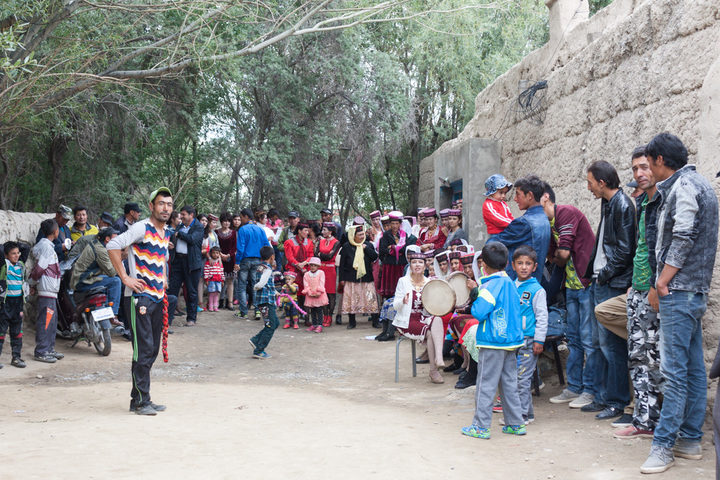
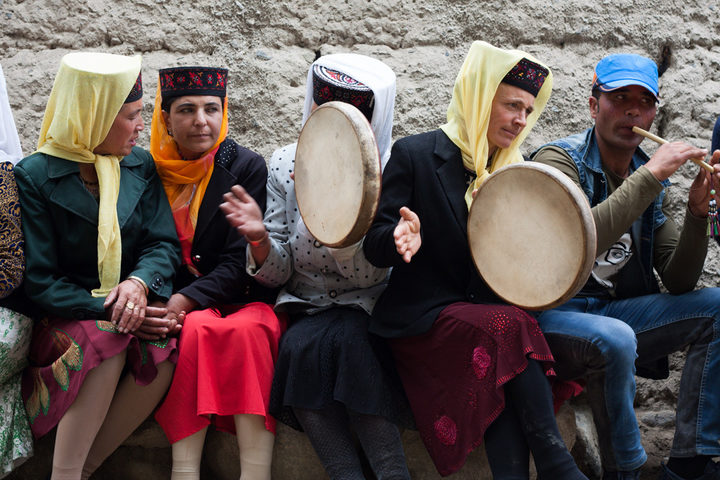
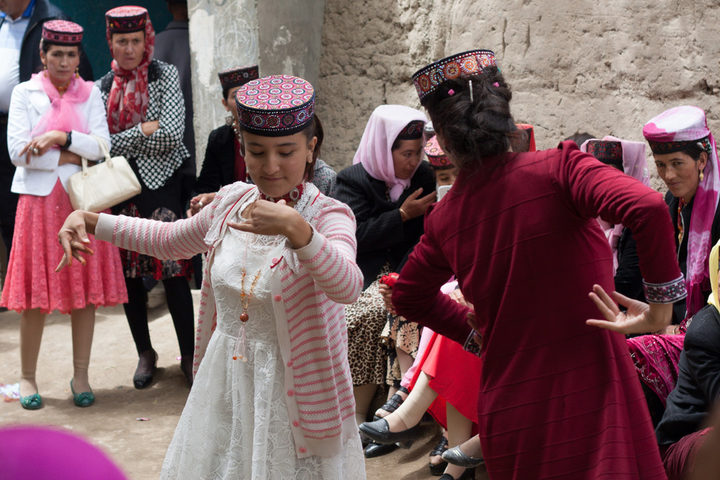
When the groom arrived more people joined the dancing to put on a show for him while he sat in the car. The groom dressed in a western suit with head piece made from white and red silk. The bride wore red with her face covered in a white veiled during the entire ceremony.
After a few minutes, they moved inside and guests sat separated by gender in different rooms. When the vows started people packed into the main living room of the traditional Pamiri home. Silence came about for a few minutes as the as Qur'an was read and vows were recited. Immediately after were more dancing and a meal for the visiting party. In the meantime, groom's friends started to load the brides' processions onto a truck. Carpets, shelves, suitcases and gifts where carried away at a hurried pace. All in all, the couple was inside for no more than an hour and now was on their way to say goodbye. The mood suddenly turned from excitement to sadness as people followed the couple outside. Everyone started to cry even the children who seemed so thrilled moments before.
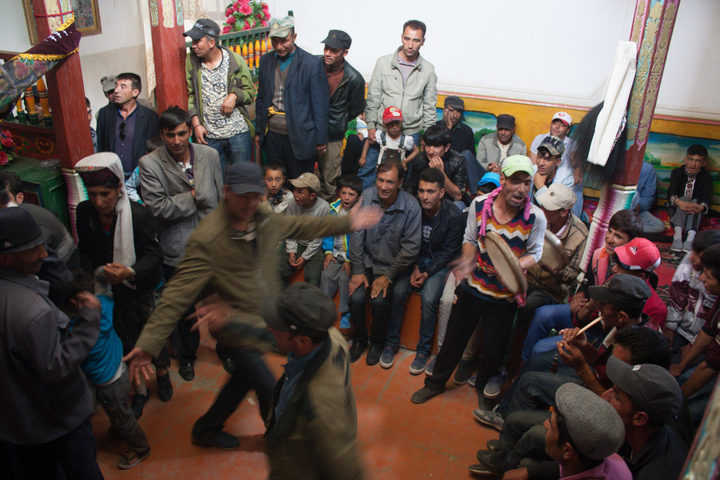
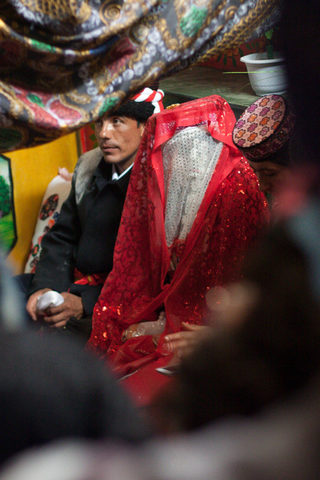
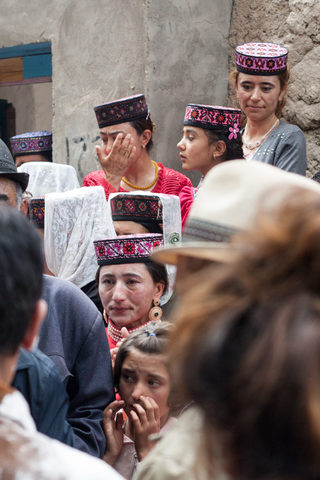
The Perspective of the Groom's Family
The following weekend I attended another wedding in a village just west of Tashkurgan by the set of mountains that separated China from Tajikistan. The atmosphere outside was quieter with dancing taking place inside composed of mostly men. The crowd of dancing men combined with the altitude made the air suffocating inside.
When the time came for the groom to leave people followed him to the parking lot. Kids climbed on the back of pickup trucks and showed their excitement as the fleet of cars departed to the bride's residence.
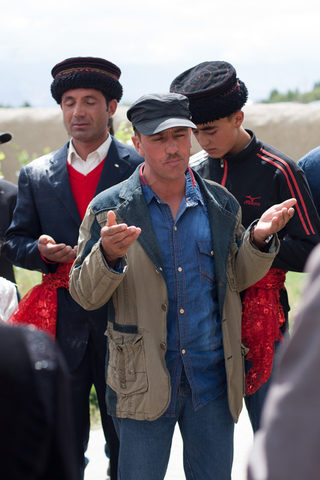
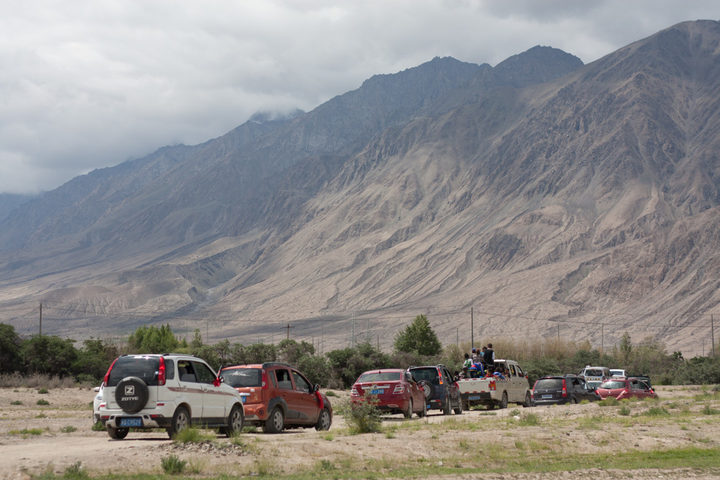
Only men were allowed to go with the groom. The women stayed back to do house work. They were washing dishes and preparing for the arrival of the bride. Some also helped to clean and set up the room for the couple. Men were in charge of the cooking, they were cooking in the larger of the two kitchens, boiling meat and cleaning hair off a sheep head with a gas torch.
It was a long wait but people shifted outside as rumors of their return spread. A few minutes later familiar music can be heard and the kids returned with the same excitement as they left.
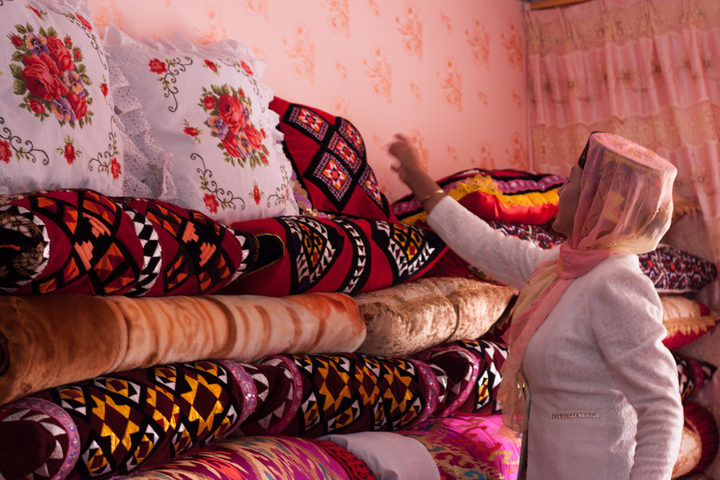
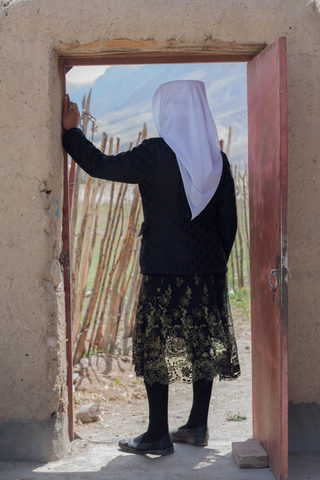
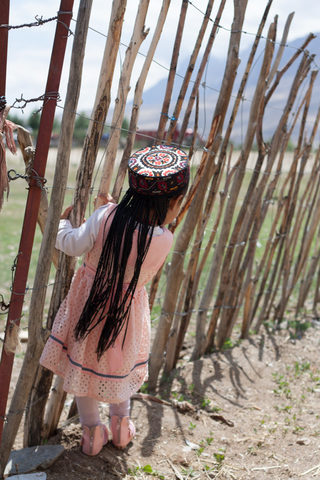
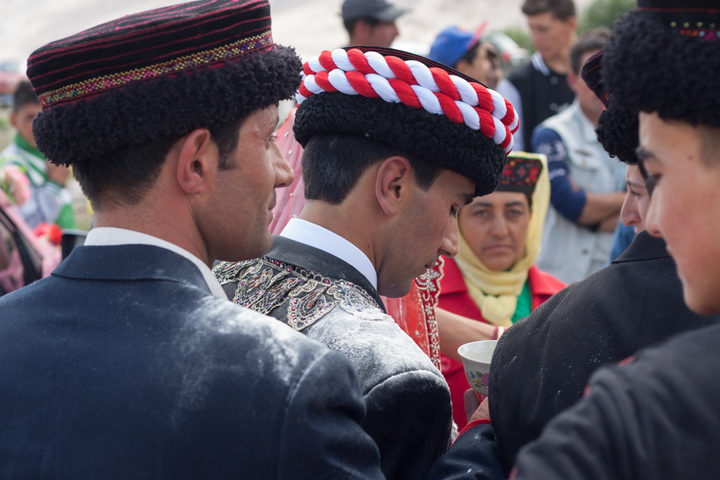
Women held in their hands flour and butter milk while standing in outside waiting to welcome the new couple. Flour was thrown onto the clothing of the gloom and his party. The couple is then invited to drink the milk. This process is a repeat of what happened when the gloom visits the bride's house. A sequence identical to the vows performed in the bride's family was also performed inside. 4 Afterwards food was served for the guests. Some Tajik men brought with them baijiu. They explained to me drinking is not part of their tradition but something they learned from the Han Chinese. 5
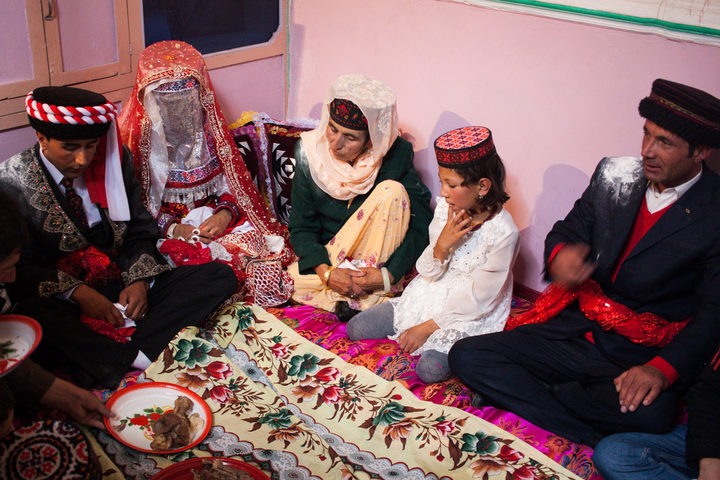
The bride will spend the next three days in the groom's place. After that her first intention may very well be visiting her family.
-
Soon this will be reduced to only 3 hours with an upgraded highway. An airport and being built as well. ↩
-
NHK's Silk Road documentary video filmed in the 70s shows this sequence which remains to be the same to this day. "The Silk Road: Two Roads to the Pamirs" https://youtu.be/dGfSBdYlCYs?t=38m54s ↩
-
Pamiri men here seemed to have a low alcohol tolerance or were simply drunk before arrival. I was also surprised they didn't drink vodka since they used to be quite close to the Soviet Union. ↩

